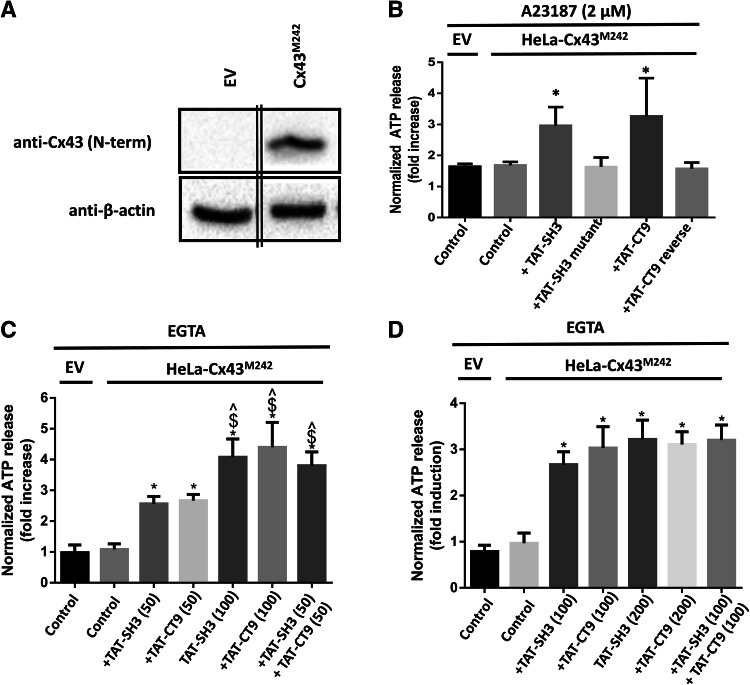Fig. 6.
The activity of CT-truncated Cx43-hemichannels can be restored by TAT-SH3 peptide. a An immunoblot stained with anti-Cx43 (N-term) (upper blot) or anti-β-actin (lower blot) for lysates (10 µg of lysate/lane) obtained from HeLa cells transfected with empty vector (EV) and Cx43M242 (10 µg of lysate/lane). The double lines indicate that the lanes originating from the same gel/blot and exposure time were merged together. b HeLa cells transiently expressing EV or Cx43M242 were exposed to 2 µM A23187. ATP release was determined in the presence of vehicle (control), TAT-SH3, TAT-SH3 mutant, TAT-CT9 and TAT-CT9 reverse peptides, all provided at 100 µM. c Similar experiment as in B, but cells were exposed to 50 µM TAT-SH3, 50 µM TAT-CT9, 100 µM TAT-SH3, 100 µM CT9 or 50 µM TAT-SH3 + 50 µM TAT-CT9. Asterisk indicates significantly different from EV control; caret symbol indicates significantly different from 50 µM SH3; dollar sign indicates significantly different from 50 µM CT9. d Similar experiment as in b, but cells were exposed to 100 µM TAT-SH3, 100 µM TAT-CT9, 200 µM TAT-SH3 or 200 µM CT9, or 100 µM TAT-SH3 + 100 µM TAT-CT9. Asterisk indicates significantly different from EV control. b–d In all ATP release experiments displayed, empty vector-transfected HeLa cells were used to determine the background ATP release in the absence of exogenous Cx43 (EV control). Control indicates that the cells were only treated with A23187 or EGTA and vehicle but not with peptide. Data show normalized ATP release as fold induction of baseline values before the stimulus (A23187 or EGTA) and were obtained from 3 to 6 independent experiments

